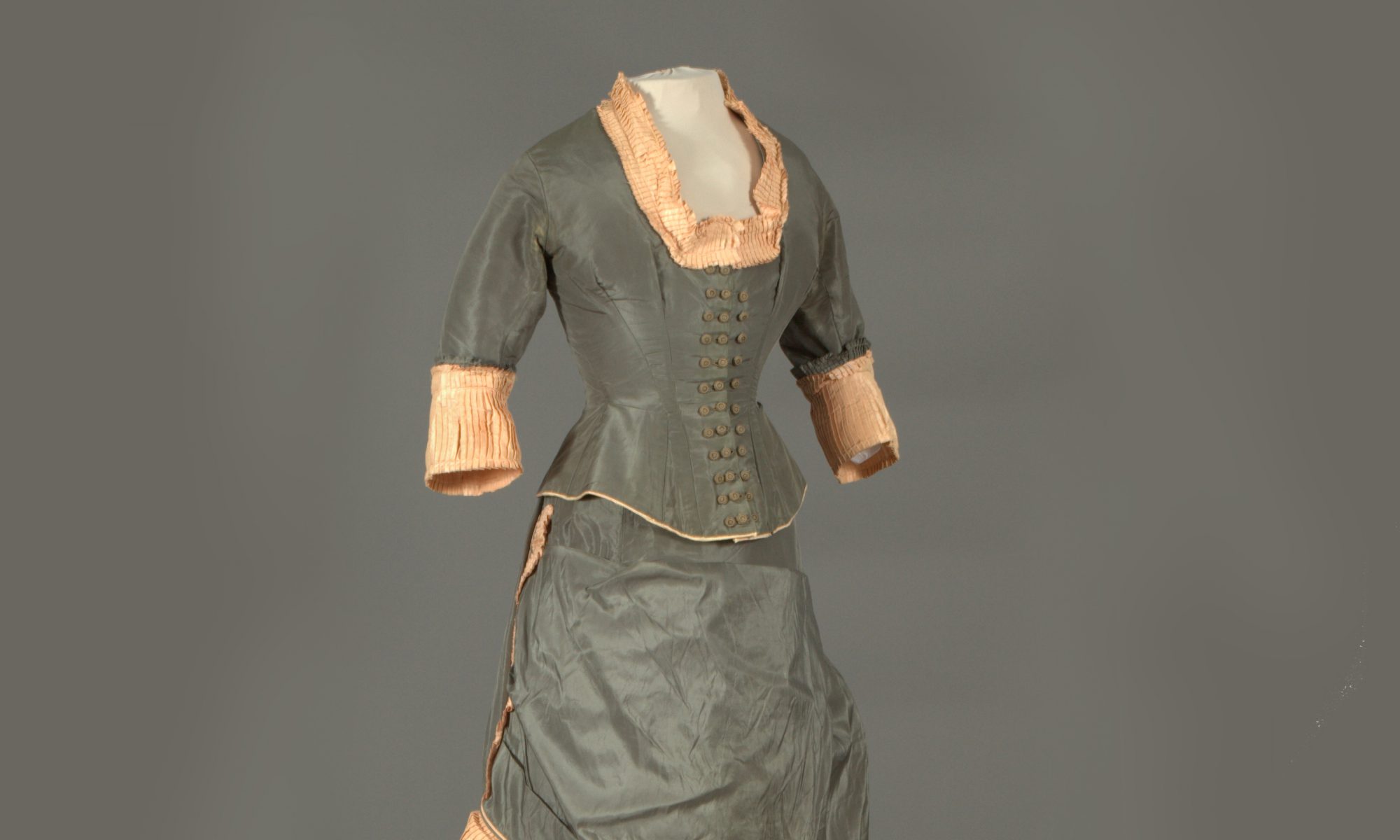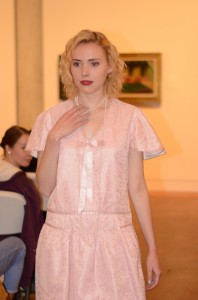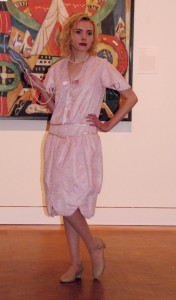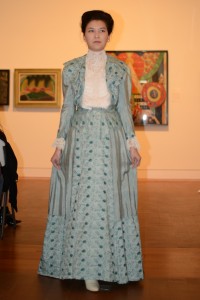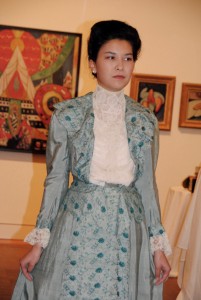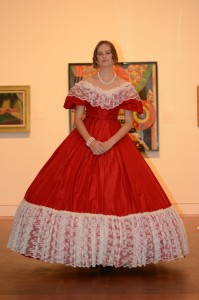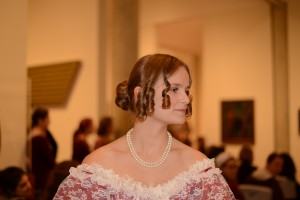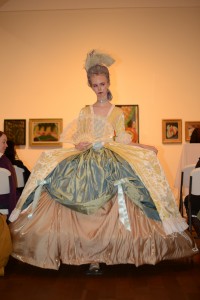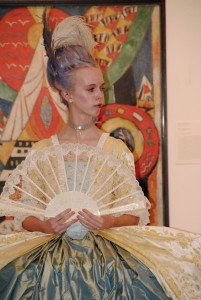This post from Ruby Pierce is the fourth of a series of four to share the text she wrote to accompany the four historic looks in the fashion show at the Frances Lehman Loeb Art Center in October.
During World War I, women did a great deal of important work. Some were on the front lines, acting as nurses, spies, and unofficial soldiers. By the end of the war it was clear that women’s clothing would never be the same. Women required much more freedom and less fuss with their wardrobes; thus the “boyish” silhouette of the 1920s was born. As we see here, the corset was banished, and a complete de-emphasis of the waist began.
Many women rejected traditional femininity during this period, particularly as it had been expressed in the Victorian and Edwardian eras. This can be seen not only in the silhouette, but also in the popularity of short hair and suits. These changes were combined with a rising skirt hem. This look embodies an essential shift in women’s fashion and in women’s liberation — from the extremes of the robe à la française to the pouter-pigeon silhouette, the look of the twenties marked the beginnings of a new kind of personal freedom for women, the benefits of which we still enjoy today.
The model for this look was Christie Honore.
Sources:
Helen Zenna Smith, Not so quiet: stepdaughters of war (New York: Feminist Press at the City University of New York, 1988).
The Victoria and Albert Museum, s. v. “Fashion Drawing and Illustration in the 20th Century”, accessed November 15, 2015, http://www.vam.ac.uk/content/articles/f/fashion-drawing-in-the-20th-century/
Wikipedia, the free encyclopedia, s. v. “1920s in Western Fashion ”, accessed November 15, 2015, https://en.wikipedia.org/wiki/1920s_in_Western_fashion
Blanche Payne, Geitel Winakour, and Jane Farrell-Beck, “Early Twentieth Century: 1900-1945,” in The History of Costume (New York, New York: Harper Collins Publishers, Inc. 1992), 568.
